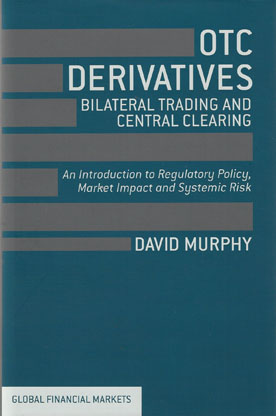
The OTC derivative market has been hit by a massive wave of regulatory change. Capital and margin requirements have increased, trade reporting has been mandated, and execution mechanisms are evolving. Most of all, central clearing is being imposed for many transactions.
OTC Derivatives explains the new rules and the new models. It discusses the traditional bilateral market, then sets out how this will change due to central clearing and the new ways in which OTC derivatives will be traded. The risks of OTC derivatives clearing houses are discussed in detail, as are the protections that CCPs have against these risks. We also look at alternatives to some of the policy decisions, showing the balance between different costs and benefits of various approaches to derivatives market stability.
The book is both a detailed primer on OTC derivatives clearing and a powerful insight into post-crisis financial regulation.